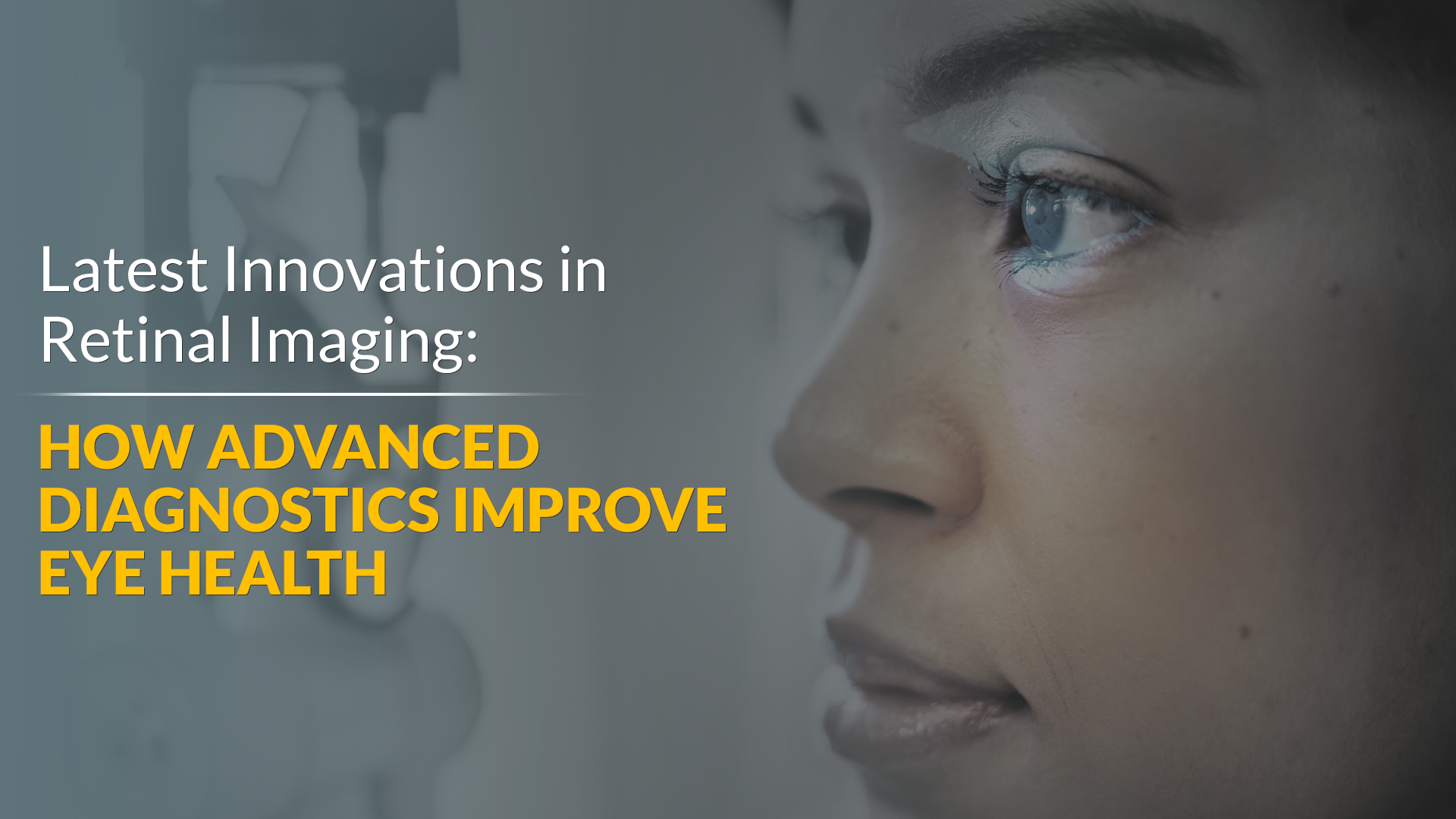
 Posted By shubham dhyani
Posted By shubham dhyani- Comments 0
Retinal imaging is a collective term for non-surgical methods of taking high-quality pictures of the elements present in the back of the eye, such as the retina, optic nerve, and the blood vessels around them. These methods are extremely important in the diagnosis and monitoring of diabetic retinopathy, glaucoma, and age-related macular degeneration (AMD). By allowing an early detection of eye diseases, retinal imaging technology improves treatment and saves vision.
Why Retinal Imaging is Critical
Retinal disease is becoming a leading cause of blindness, particularly in middle-income nations. Most systemic illnesses, such as diabetes and hypertension, also express themselves in the posterior segment of the eye. With the global availability of high-speed and high-resolution imaging, ophthalmologists now increasingly rely on advanced eye diagnostics to classify and manage disease accurately. The major advantages of retinal imaging are:
- Disease Screening: Alerts on abnormalities before symptoms develop.
- Pathology Documentation: Creates comprehensive records of the conditions of the retina.
- Tracking Disease Progression: Compares change over time.
- Evaluating Treatment Response: Determines how patients are responding to treatment.
Advanced Techniques in Retinal Imaging
1. Ultra-Widefield (UWF) Fundus Angiography
With UWF fundus angiography ophthalmologists are able to image around 82% of the retina in one snap. A dye called fluorescein is injected into a vein and as it circulates images are captured to assess the clear view of the blood flow and detect abnormalities. Although very useful, this procedure is not without risk and thus may not be ideal for everyone.
2. Fundus Autofluorescence (FAF)
FAF is an imaging method that is non-invasive and assesses the function of the retinal pigment epithelium (RPE). It is most beneficial in the diagnosis of Best’s disease and hereditary macular dystrophies by identifying extracellular debris at the optic nerve head.
3. Optical Coherence Tomography and Angiography
Optical Coherence Tomography, usually referred to as – OCT scan for retina, yields a cross-sectional view that shows intricate details of individual retinal layers. OCT allows an early detection of eye diseases, even before the onset of symptoms. The latest developments are OCT angiography, which provides a dye-free imaging technique to capture retinal blood vessels, making it safer and more effective in detecting vascular defects.
Breakthroughs in Retinal Imaging Technology
The ophthalmology field is progressing rapidly, with revolutionary developments improving early disease identification and treatment planning. Some of the recent developments include:
1. AI in Ophthalmology
Retinal diagnostics is going through a significant revolution as more and more AI-based imaging technologies are being used. Researchers at the National Institutes of Health (USA) used P-GAN, an AI-based approach on adaptive optics-OCT (AO-OCT), and this reduced time spent in imaging by 99 folds and increased image contrast substantially. This opens the door for the early detection of diseases like AMD at a cellular level.
2. Adaptive Optics Scanning Light Ophthalmoscopy (AOSLO)
Researchers at the University of Rochester have unveiled multi-offset detection technology, which makes it possible to visualize individual retinal ganglion cells (RGCs). The method is especially useful in the detection of glaucoma in its initial stages before the damage becomes permanent.
3. Multimodal Systems
MERLIN project is a team of researchers based in Europe which has combined scanning laser ophthalmoscopy, OCT and OCT-angiography into a single device. This device is capable of detecting microscopic changes in retinal lesions and providing 3D imaging at cellular resolution. This device is expected to reduce undiagnosed cases and support personalized therapeutic approaches.
4. Digital Retinal Imaging (DRI)
With DRI, you can image the retina in high definition without needing dilation. You can easily do real-time assessment of conditions like AMD, diabetic retinopathy and glaucoma. With this method, the process of data collection and secure storage of this data enables you to monitor the disease progression through time.
Perks of Advanced Eye Diagnostics
Early Detection of Eye Diseases:
Any advanced retinal imaging technology, be it AO-OCT or AOSLO; provides you crystal-clear images of retina. With the intricate details revealed in high definition, it’s possible to detect diseases in the eye before any symptoms appear.
Better Disease Monitoring:
AI tools help you monitor how the disease develops in real-time. This minimizes the risks of complications and allows appropriate intervention at the right time.
Personalized Treatment Strategies:
Systems like Multimodal imaging provide a bird’s eye view of how changes in retina occur. This makes it easier for ophthalmologists to customize treatments which are being given to the patient based on his exact condition.
Greater Convenience and Cost-effectiveness:
These advanced imaging techniques are very simple and quick. They don’t require patients to visit the facilities again and again. It makes it convenient for the patients to get examined without spending more on appointments.
AKIO: Leading Retinal Imaging Innovations
Sophisticated retinal imaging technology is revolutionizing the diagnosis and treatment of eye disease. And we, at AK Institute of Ophthalmology (AKIO) are completely devoted to keeping up with these innovations. Our facilities are fully equipped to provide accurate diagnosis and superior care to patients. And a panel of distinguished ophthalmologists in Delhi makes sure that we deliver the finest solutions for treatment that guarantee lifelong eye health.



